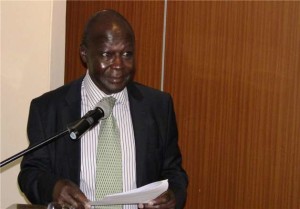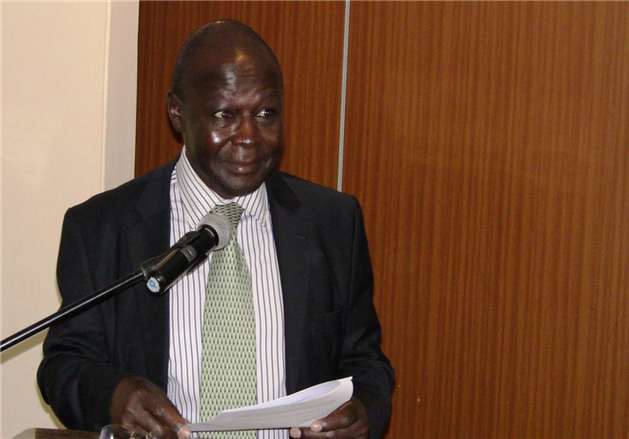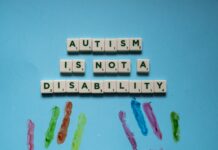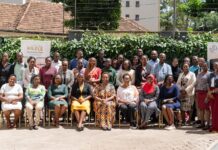By Mary Mwendwa
Nairobi, Kenya: Being part of a team that first set up VCT (Voluntary Counseling and Testing ) center for HIV/AIDS in Kenya was not any easy task for him.
A time when many people committed suicide by jumping from the top of Nyayo House, KNH Tower, and KICC upon being diagnosed to be HIV positive and committing suicide. A cloud of ignorance, fear, anxiety and panic about the disease hang among many.
Dr. Sobbie Mulindi, a Senior lecturer at the University of Nairobi and former director, National Aids Control Council (NACC), traces the long journey of 30 years of HIV existence in Kenya.
“When the first case was diagnosed in 1984, there was a lot of denial from the government saying that there were no homosexuals in Kenya. There was also fear that it would scare off tourists from coming to tour, coupled with a lot of paranoia, sensitivity and scapegoating. It has been a long battle to fight ignorance, build consensus and capacity, develop policies guidelines and protocols to stem the epidemic.”A jovial Mulindi says.

However, as the number of cases increased the ministry of Health set up a National Aids Committee to deal with the issue.
“Initially there was fear of declaring HIV as a national disaster; it took the efforts of Kenya Red cross and Hillary Ng’weno the courage to publish the first information of Aids in then the weekly review. From there on other stakeholders took up the campaign vigorously.”
Mulindi recalls vividly how a huge challenge of a provision of care for families and people with HIV from 1990 s to 2000.”An evaluation was done in 1995 with a team comprising of Dr. Maina Kahindo, Dr.Jack Nyamongo, Dr.Victoria Wells and Dr.A.Ziai followed by another survey by John Stover (Aids Survey Effort Index) which revealed that there was minimal political will within the country to fight Aids. During this period, the number of infected persons was estimated to be 1.2 million and expected to rise to 1.7 million by year 2000.The prevalence was around 19% and bed occupancy in hospitals was 60%.It was realized that AIDs was not a health issue only but was affecting other sectors of life at large.
Response strategies
“In November 1999, President Daniel Arap Moi declared AIDS a national disaster and this led up to setting up NACC. NACC had Dr. Margaret Gachara and Dr. Peter Orege as directors successively. I had the privilege and honor of being appointed the deputy Director, Coordination, and Support. I worked under the supervision of Prof. Alloys Orago, Prof. Miriam Were and Prof. Mary Getui successfully. I was involved in the review and development of Kenya National HIV and AIDS strategic Plan (KNASP 111) and KNASP IV. I was also in charge of stakeholder coordination of development partners, youth, faith-based organizations, private, public and other sectors.”
Mulindi and his team convened pillar 111 of the strategic plan and ensured effective regional and community participation in the response through a call for proposals supported by World Bank, Total War on Aids project and Global Fund.
Despite all these interventions, another hurdle that came in was the affordability of ARVs by AIDs patients. A major challenge had earlier been experienced when there were premature announcements of finding a cure for which included drugs like Immunex, Kemron, Pearl Omega, polyatomic oxygen etc. Even traditional healers had false claims for the cure of AIDS.
As Prof. Mulindi says there was a lot of pressure from various groups especially in the USA, Europe, and Africa that pharmaceutical companies were making exorbitant profits while millions of people all over the world were dying because they couldn’t afford life-prolonging ARVs.This led President George Bush to come up with PEPFAR (US President’s Emergency Plan for AIDS Relief). WHO/Afro contracted Dr. Mulindi as a consultant for the development of a database on Health sector in response to HIV and AIDS in Africa. This assisted countries to access funding on laboratory support and training and capacity in ARV use.
“At the country level, I was instrumental in initiating patient support center and comprehensive care center at KNH together with Dr. Margaret Makanyego and Dr. David Bukusi for the people to start accessing ARVs. As of December 2011 antiretroviral treatment coverage was in Kenya and it amounted to 72% reflecting extraordinary progress in bringing a lifesaving therapy to people living with HIV. Antiretroviral therapy had averted over 300,000 deaths in Kenya.”
Other Interventions
Another step towards fighting HIV was the development of (Kenya AIDS Indicator Survey (KAIS) and the Modes Transmission Study – (MOT) which were supported by UNAIDS, USG, CDC and other partners, and later on became available for the development of the third strategic plan (KMAPS III). As a result, it was realized that there were two epidemics in Kenya: one generalized and concentrated. There was an urgent need to undertake a strategic review of the plan.
The new strategic plan was required to introduce changes that ensured evidence-based targeted programs and structural shifts that accommodated the changing situation and character of the epidemic as well address the coordination challenges. “The study showed that about 44% of new infections were occurring in marriage and 33% in key populations (sex workers, men who have sex with men and injecting drug users IDUs).Unlike the previous strategic plan, the new KNASP III was required to meet stringent conditions for financing by GFATM (Global Fund AIDs, TB, and Malaria) under its National Strategy Application Mechanism that came into effect from April 2009).The new strategic plan was launched at KICC by the Prime Minister Raila A. Odinga, Hon. Beth Mugo, Hon Anyang Nyong’o and the UNAIDS Secretary-General Michel Sidibe.”
Stigma and discrimination are still common despite all the awareness people have,” Key populations are with us. They face stigma and discrimination. In the call for proposals and civil society engagement, NACC has succeeded to some extent in engaging them in HIV and AIDs programming.
“There is a lot to be done. The parliamentary health committee and most MPs have been sensitized about key populations. The good thing is the constitution which recognizes that every Kenyan has the right to the highest attainable standard of health including vulnerable and marginalized groups like key populations.”
The KAIS 2012 (Kenya Aids Indicator Survey) revealed that infection rates have dropped to 5.6 % as compared to 19 % that was in 2005.A step that Dr. Mulindi views as a concerted effort by many partners both in health and other sectors. The report still points out infections in women are still higher than that of men. The first Kenya women’s HIV prevention symposium in 2010 noted the number of women infected in the ages 15-49 almost double that of men. Causes of vulnerability were identified as income disparities and gender norms, roles and relations, gender and sexual based violence including rape and defilement.
HIV/AIDS education
Dr. Mulindi’s view on sex education among youth is that the number of young people involved in practices that put them at multiple high-risk behaviors and increased vulnerability to HIV infections and impacts cannot be overemphasized. Low-risk perceptions among youth are demonstrating through early sexual debut, multiple concurrent sexual partners, anal sex, poor health seeking behaviors for STIs, drug and substance abuse and casual sex, transactional and intergenerational sex, pornographic exposure and sharing partners. This realization demands evidence-based interventions that do not put one’s health at risk to HIV or the health of his sexual partner or offspring. Every Kenyan therefore, is entitled to the highest attainable health standards, a right that encompasses the right to education and information.
“Not only are schools a place where health information can be provided to children and adolescents but education enables people to understand and act on the health information they receive. Well designed and implemented HIV/STI prevention programs can significantly reduce sexual risk behaviors among the youth. Furthermore, there is now a generation which has been born with the virus! Currently, there are over 75,000 youths who are in need of ARVs and other services. They need to be supported energetically not to spread HIV to their friends.”
“In-school and out-of-school life skills based comprehensive sexuality education must be linked to and supported by a comprehensive package of youth-friendly sexual and reproductive health services and commodities. Services by trained youth friendly health workers. Quality education and health outcomes can be achieved through comprehensive sexuality education which requires us to invest in teachers who are trained resourced and supported to deliver programs in and out of school.” He advises.
Dr.Mulindi’s Legacy
Dr. Mulindi’s achievements in the fight against HIV are many he mentions key ones; He led 56 Chief executives to test publicly and this enhanced the private sector engagement in the fight against HIV at work place. He led teachers to test during World AIDS day in 2013; and planned, organized and launched The First Lady’s Towards Zero Strategy in Mombasa and has participated in her marathons. Spearheaded faith-based organizations HIV and AIDS action plan and strengthened their response. Coordinated key populations participation in response for the first time and coordinated the Red Ribbon awards for the media on HIV coverage.
One thing that worries Dr. Mulindi is a large number of children who have been orphaned as a result of HIV and AIDS. “Kenyans must take drastic measures to ensure that these children are supported and integrated into the community. Children raised without both parents are a great threat to the security of this nation .” Declares the consulting psychologist and HIV and AIDs researcher.
“When you find graduates engaging in commercial sex, drug trafficking, crime or becoming radicalized and terrorists, society must bet worried.”
The 66-year-old professor, who speaks three foreign languages fluently, is currently assembling materials and working on a book which traces the AIDS epidemic in Kenya for the last 30 years, continues to guide and mentor youth, especially medical students to take up the challenge as age is catching up with him.
“First I thank God for having had the opportunity to serve Kenyans in this capacity. I have traveled to all corners of Kenya and met very interesting people. I have learned a lot about the human condition, suffering, resilience, and hope. I have met and been inspired by many individuals including Nelson Mandela, Thabo Mbeki, Kenneth Kaunda, Mwalimu Julius Nyerere, Prof. Jonathan Mann, Prof Peter Piot, Michel Sidibe, Joe Muriuki and Asunta Wagura. Working on HIV and AIDS is calling above all. It requires sustained commitment and passion.”














